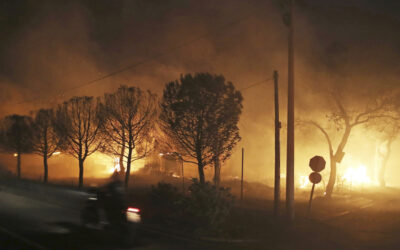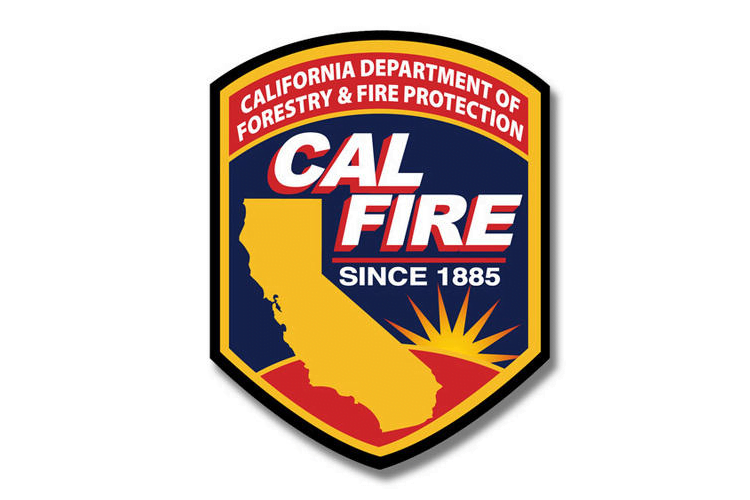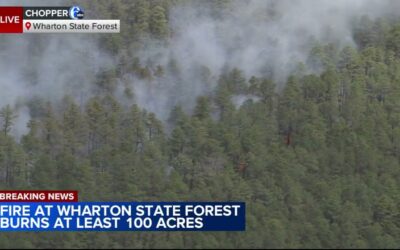Steven Mayer
The Bakersfield Californian
(TNS)
Oct. 28—The physical training was rigorous, fighting fires in remote wilderness was dangerous, and jumping out of perfectly good airplanes in the vicinity of burning forest and brush fires may have been a tad crazy.
But maybe the biggest challenge Deanne Shulman encountered as she fought to become the first woman smokejumper in the history of wildland firefighting was the men who didn’t want a woman to earn a place within their ranks.
“From 1974, basically, through 1981, sexual harassment and a hostile work environment were a daily part of my life,” Shulman told a roomful of listeners at a History Talk hosted Friday by the Kern Valley Museum in Kernville.
“There was no definition of sexual harassment,” she remembered. “There was no definition of hostile work environment … nobody thought it was bad. It was kind of accepted that if you entered a male-dominated field, this is what you get.”
Hired by the U.S. Forest Service in 1974 on the Los Padres National Forest, Shulman was one of two women, the first women hired on that forest in the firefighter position.
Shulman may not have known it then, but she soon came to understand that she was living through a key moment in history, at a time when women were, as she put it, “just starting to get a foothold in nontraditional careers.”
“I just happened to be born in a time where, in my 20s and 30s, it was a period when I was the first woman in a variety of things — wildland fire things.
“Had I been born 10 years later, somebody else would have been the first woman. Had I been born 10 years earlier … the door would not have been open.”
As the seasons passed, Shulman began to prove herself with various fire crews. One leader of a hot shot crew — Shulman calls them the Marine Corps of fire crews — who had previously told her that no woman would ever be on his crew, invited her to join that very same crew.
“I cannot tell you the honor that was,” she recalled.
While the harassment was rampant, there was also quiet support along the way, mentors, advisers and even peers whom she realized later had her back.
“There’s a certain mythology around smokejumping,” Shulman said. “There’s a lot of romanticism.”
And machismo.
Books have been written. Movies have been made about this almost cultlike firefighting subculture.
And why not? Most parachutists go to great lengths to avoid trees.
But smokejumpers sometimes prefer landing in a tree as it may be less hazardous than rocky, steep, uneven terrain that posed injury risks — especially during her era of the now nearly obsolete round parachute, which comes down so fast, jumpers must collapse their body frame to avoid breaking their ankles.
After gaining yet more experience as a wildland firefighter, in 1979, Shulman decided to try to jump into the elite world of the smokejumper — firefighters who parachute in to fight remote fires at their edges.
That’s when the door began to get even tighter.
She knew there would be a stringent physical fitness test required to break into this male-only field, so she worked out all winter to prepare herself for what was to come.
She also knew there was a minimum weight requirement of 130 pounds. And she weighed 125.
“I thought, ‘Well, I’ll just eat a lot of candy and cookies and cake, and I’ll get to 130.'”
After driving from California up to the Pacific Northwest, Shulman underwent the physical tests and passed. It was only then that she was ordered to report to the hospital to get weighed.
The result: 125 pounds.
“So I went back to the base, and an hour or so later I was fired.”
On the verge of tears, but refusing to cry in front of this place filled with men, she walked across the base to gather her things to leave. Some male colleagues stopped to tell her no one they had ever heard of had been fired for being underweight.
One firefighter, nicknamed “Mouse,” weighed even less than Shulman, but he had come back from Vietnam after serving as a “tunnel rat,” climbing into the below-ground maze the enemy used to evade American troops.
Mouse had received a congressional waiver to be admitted to the smokejumper crew.
Shulman would not give in. She wrote letters, appealed to higher-ups, appealed to their sense of logic, fair play and the better angels of their nature.
In 1981, she became a smokejumper at McCall Smokejumper Base in Idaho.
The process of proving herself began yet again, but her intelligence, courage, stamina, strength and knowledge of firefighting won the day.
“By my fourth season, the McCall Smokejumpers were bragging that they had the first woman smokejumper,” Shulman remembered.
Not only had she earned her place as a smokejumper, she had earned the respect of her fellow jumpers.
Shulman knew she couldn’t make smokejumping a career, and ultimately began moving into management positions with the Forest Service.
“Deanne was actually a battalion chief here in the Kern River Valley from about 1987 to ’97,” museum volunteer Linda Adams told the crowd at Friday’s History Talk.
Dianna Anderson, curator and archivist at the museum, said she was in awe of Shulman’s determination in the face of relentless odds.
“After they fired her the first time, most people would have quit and gone on to do something else,” Anderson said.
Shulman enjoyed a long and varied 37-year career with the U.S. Forest Service. She served five seasons as a smokejumper, making 77 jumps in seven states. Once, she was accidentally dropped north of the border into Canada.
According to Shulman, some 400 to 450 smokejumpers are hired every summer, and they are managed at a national level.
“What kind of people become smokejumpers?” she asked Friday’s gathering. “Well, we all know they’re crazy, right?”
Many are teachers, she said. Some are adventurers, or ski instructors or scholars working toward advanced degrees.
In spite of it all, the pornographic calendars, the juvenile pranks and the institutional barriers to women, working as a smokejumper for five seasons was an amazing experience, Shulman said.
“Underneath all this harassment, I knew they respected me because I could keep up,” Shulman told her rapt audience. “I also knew they loved me in a brotherly way. I felt that very deeply, otherwise I couldn’t have been on that crew.
“It was kind of magical to be in such good physical shape and keeping up with them,” she remembered. “We got to travel all over to beautiful wilderness areas.
“The camaraderie of working 48 hours straight on a fire,” Shulman said. “You develop all that stuff that happens when groups of people work in adverse situations together.”
Someone once called it “The Right Stuff.”
Reporter Steven Mayer can be reached at 661-395-7353.
___
(c)2023 The Bakersfield Californian (Bakersfield, Calif.)
Visit The Bakersfield Californian (Bakersfield, Calif.) at www.bakersfield.com
Distributed by Tribune Content Agency, LLC.




